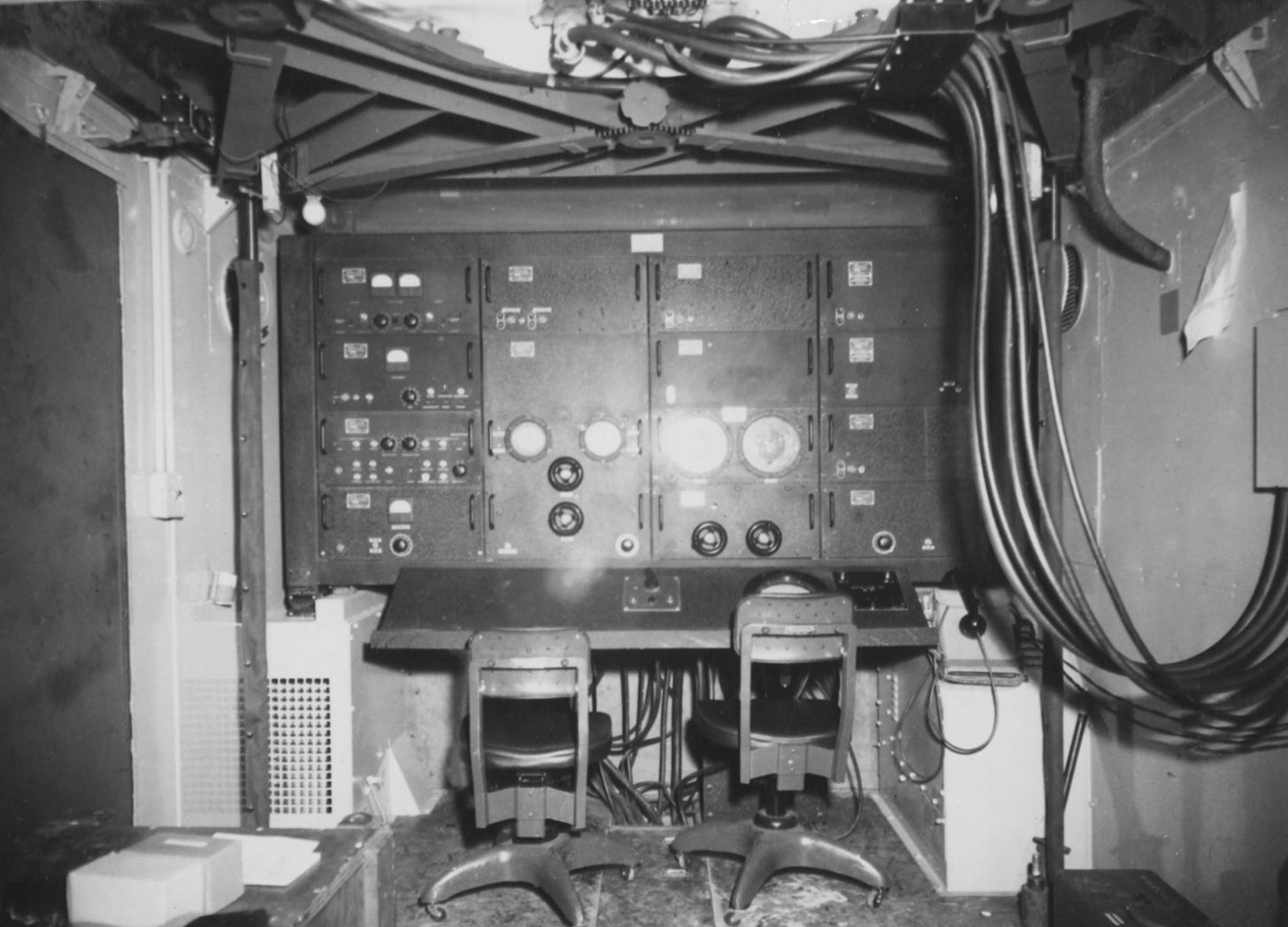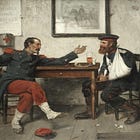
Use of Radar for Locating Ground Targets
Comments of Officers of XV Corps Artillery and AAA units
On 1 November 1944, the Twelfth Army Group published the following report. Apart from the expansion of abbreviations, the text replicates, verbatim, that of the original document.
General
The 214th Anti-Aircraft Artillery Gun Battalion has experimented with the use of radar to locate moving ground targets at night, with some apparent success. The experiment was initiated by Lieutenant Colonel Carl W. Kietzman, Commanding Officer , and Captain Richard C. Matlack, Battalion Radar Officer.
Introduction to Experiment
The idea was suggested when it was noted that convoys of U.S. vehicles showed up in the range scope of the SCR-584. At the time, the set was located on a high hill and had an axial line of sight on the highway along which the vehicles were moving. As they came over a high point some 5,000 yards away they showed up as moving pips on the range scope. The pip movements showed up for 100 to 200 yards before being lost among fixed target pips caused by trees and bushes.
Installation
Based on this experience, and in accordance with the line-of-sight characteristics of radar, an installation was made in the XV Corps area overlooking enemy territory. The set was placed as close as possible to enemy positions in order to get the maximum response from the moving vehicles, which ordinarily show up quite weak on the scope. The position selected was in full view of the enemy. For this reason, it was decided to fortify the position and to operate only at night.
Operation
The intention was to locate enemy movement on the roads and pass on the information to XV Corps, which had set aside certain battalions of artillery to fire on the targets found. The radar was to report the location, direction, and speed of travel, and the artillery was to compute the point to fire on, then drop a TOT (time on target) shoot on it.
The most successful method of detection found was to point the parabola at a high point on an axial highway and watch for pip disturbance to occur at the range to the road. Azimuth and range were determined from a map. A vehicle moving through the beam would cause the pips already present from fixed targets to suddenly move up and down, then stop after the vehicle had passed. In some cases when a disturbance was noted, the pip causing the reaction could be observed changing in range for a short distance.
Since positive detection depends on noting a change in range, the method employed limited the search to roads axial to the radar. When disturbances of the pip occurred, it was noted that the tracking current meter of the auto-track unit oscillated violently and swung more than normal, so it was used as an aid in detecting movement.
Results
The operation began on 22 October, and by 29 October movement had been detected on three roads and one crossroads. In the five nights that it was possible to operate, a total of twelve fire missions were sent in on these targets. There was a distinct change in the pace of traffic after the firing in each case, and it was believed that some vehicles were halted as a result.
As an example, the crossroads was watched for several nights and, when movement was detected, it was shelled. Four nights later the same area was checked again and no movement was detected. A switch was then made to another road where movement was detected and fired upon; this movement ceased.
Conclusions
The limited results of the operation were partly due to the wet weather. When it was wet, it was difficult to pick out moving echoes from fixed echoes. When fixed targets such as hills, trees, and bushes were wet, the pips from them were accentuated and ‘bounced’ much more than when dry. This made it difficult to distinguish the ‘bouncing pip’ caused by a vehicle from those caused by fixed targets. When one was detected it soon became lost in the fixed echoes.
It was felt that the use of radar for locating ground targets has definite possibilities and that the effectiveness of our field artillery might be increased by the use of small portable radar sets. Experiments are being continued with new sets with a narrower pulse width.
Source
‘Immediate Report Number 90 (Combat Observations), 1 November 1944’ Immediate Reports of Combat Observations 130 to 1 Combined Arms Research Library
For Further Reading







